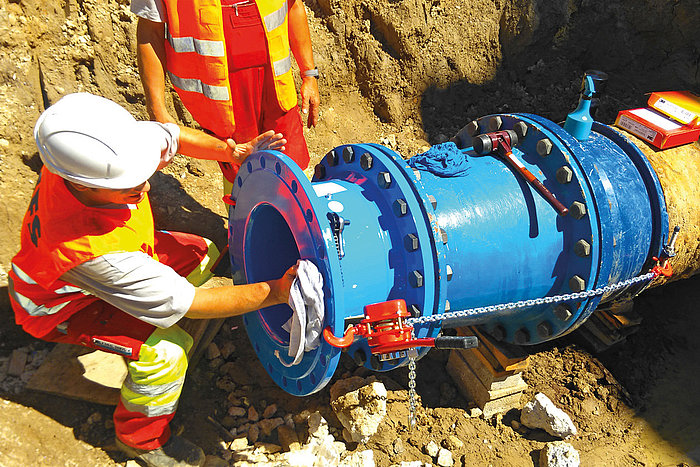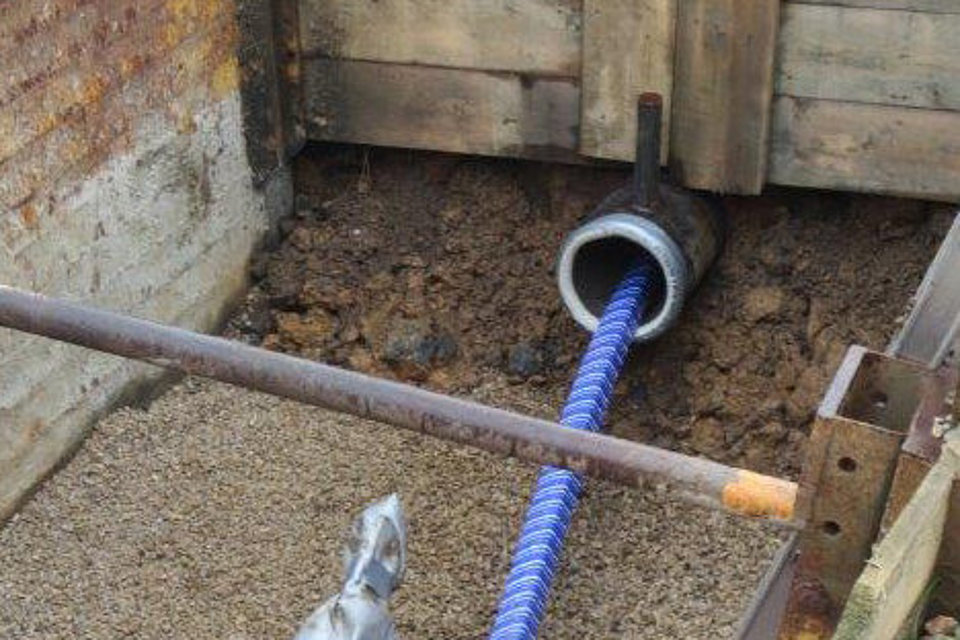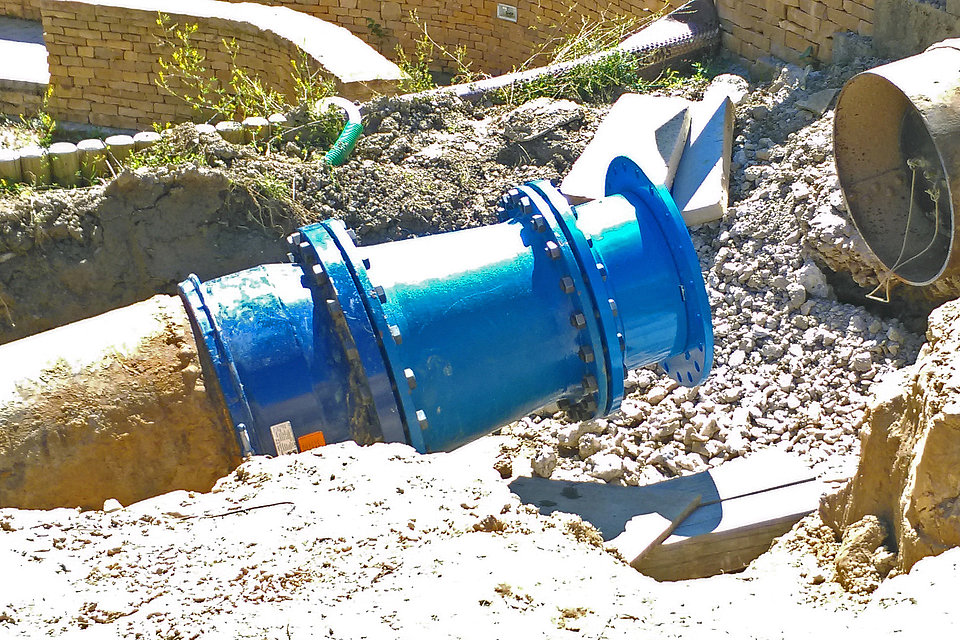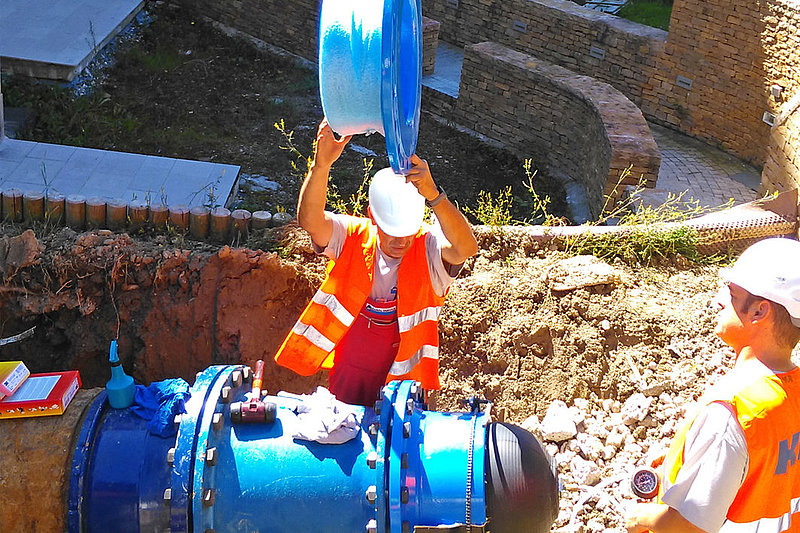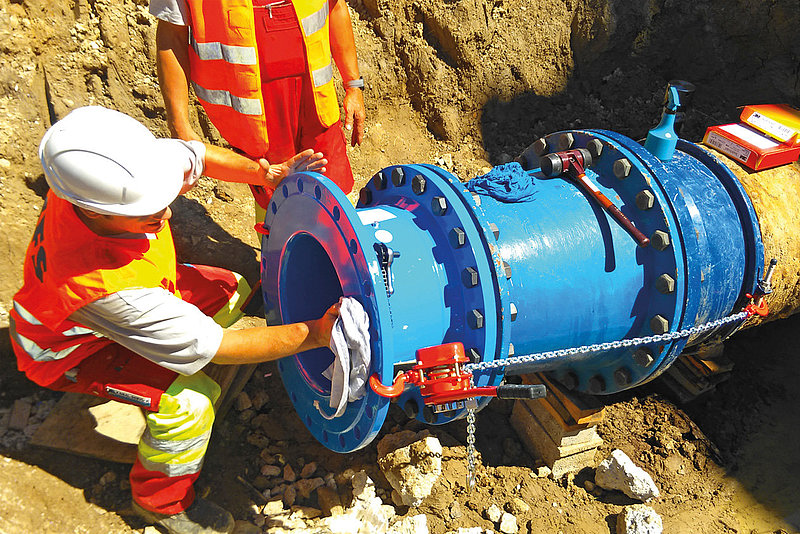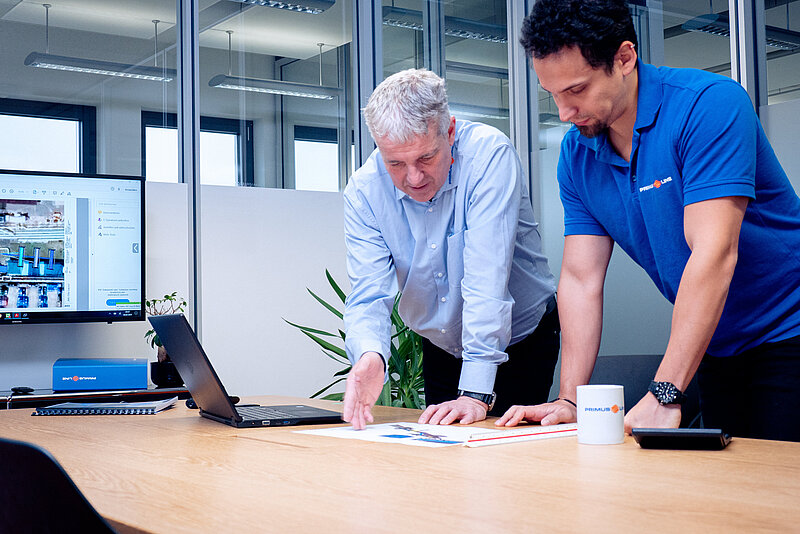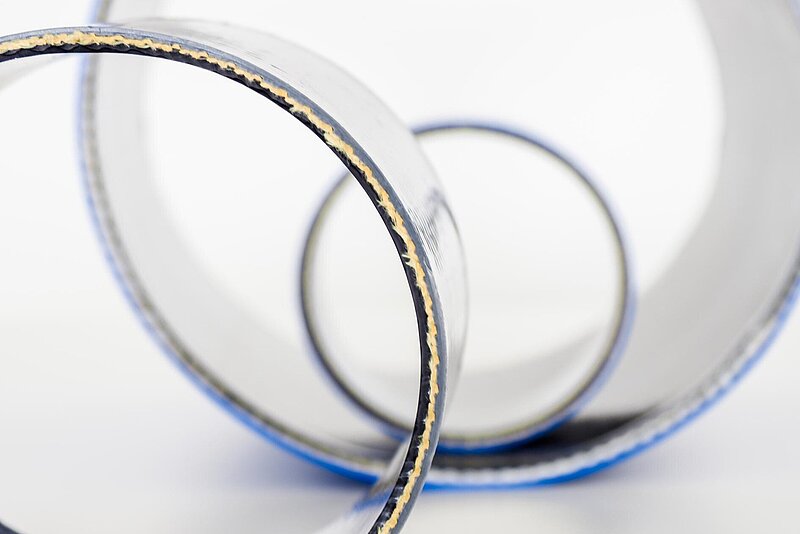Depending on the design, aramid threads or a combination of aramid and polyester threads give the Primus Liner its supporting structure. It is surrounded on the inside and outside by a comparatively soft and high-tensile layer of polyethylene or polyurethane.
This results in systematically high malleability, which distinguishes Primus Line® from other liners for the rehabilitation of pressure pipes. While other solutions only achieve a comparable tensile strength in the circumferential direction for accommodating the internal pressure on the basis of their ring rigidity, the Primus Liner absorbs this pressure completely with its flexible, aramid support structure. It only assumes its stable circular shape once in operating mode by means of the internal pressure. An annular space remains between the liner and the inner side of the pipe. If there is no internal pressure, it loses this shape again under its own weight.
Primus liner close to inclusion in DIN EN 11295
The Primus Line® system is going to be included as a renovation process in the framework of the current revision of the standard DIN EN 11295:2010 under the name “Lining with inserted hoses”. In an expert opinion, the specialist Dr.-Ing. Ricky Selle from Selle Consult GmbH in Leipzig examined how the lack of ring rigidity of the Primus Liner is to be assessed with regard to fulfilling the normative requirements.
A key criterion is the stability of new and rehabilitated pipes under vacuum. According to DIN EN 805, water pipes must temporarily be able to withstand negative pressure of up to 80 kPa in order to withstand repeated pressure surges and to be regarded as safe. According to DIN EN 1990, the stability of construction products is not based on the permanent preservation of the form, but rather on permanent fulfilment of the design requirements. Although the Primus Liner temporarily loses its solid, circular shape when it is under negative pressure, due to its design, it immediately resumes it when the operating pressure returns.
Test confirms stability according to DIN EN 805
An experimental investigation of the bursting pressure behaviour illustrated how the stresses from repeated temporary negative pressure affect the tensile strength in the circumferential direction of the Primus Liner. The component tests compared the mean value of the bursting pressure of five test specimens without pre-stress with the mean value of the burst pressure of five test specimens, which had previously been subjected six times to a negative pressure of 80 kPa for a period of ten minutes each. Primus Line® DN 200 with a length of 2 m each was used.
With the pre-stressed liners, the tensile strength was reduced by about 0.2 percent - a value that lies within the standard deviation of the results. Thus, a temporary vacuum does not lead to any reduction in the mechanical properties of the Primus Liner. It thus fulfils the requirements of DIN EN 805 on the stability of water pipelines during a temporary vacuum.
Installation principles with external pressure
In leaking old pipelines, incoming groundwater or stratum water can generate pressure on the liner from the outside. To counteract any effects on the circular form in these cases, Primus Line works with two installation principles. Firstly, the system is generally designed with an operating pressure which exceeds the possible external pressure. Secondly, relief valves or permeable flange connections near the connector and the existing pipe allow for simple outflow of the excess water from the annular space. Pipe monitoring systems for the rehabilitated pipe also help operators to determine any pressure increase in the annular space.
